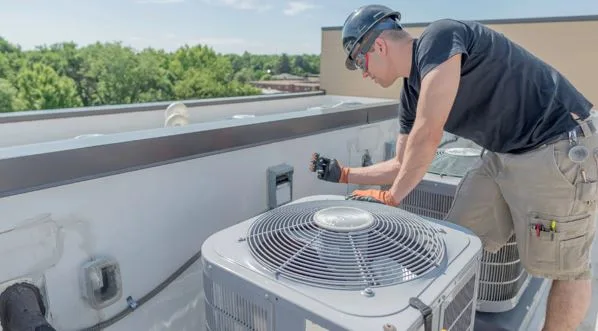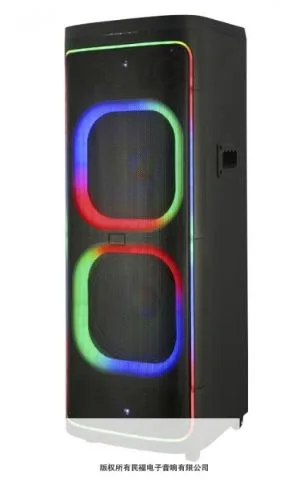Egress Windows: The Overlooked Upgrade That Adds Safety, Light, and Value
When thinking about home improvement projects that enhance both safety and livability, basement upgrades often take a back seat. However, one element of basement renovation that should never be overlooked is the installation of egress windows. These specialized windows are more than just architectural features—they serve a critical function in protecting your household and improving your home’s utility.
Whether you’re transforming your basement into a living area, planning to sell your property, or simply looking to boost the safety and value of your home, egress windows can offer impressive returns. In this comprehensive guide, we’ll explore what they are, why they matter, and how they tie into broader home maintenance strategies like moisture control and emergency preparedness.
What Are Egress Windows?
Egress windows are large, operable windows installed in basements or lower-level rooms that provide an emergency exit in case of fire or other dangers. The term “egress” simply means “a way out.” In residential construction, these windows are required by building codes when a basement contains a bedroom or any habitable space.
To qualify as an egress window, the unit must meet specific size and functionality requirements:
- Minimum opening width: 20 inches
- Minimum opening height: 24 inches
- Minimum net clear opening: 5.7 square feet
- Maximum sill height from the floor: 44 inches
Additionally, the window must be easy to open from the inside without tools or keys. If installed below ground level, the window must also be paired with a window well large enough to allow an adult to exit.
Why Egress Windows Are Essential
1. Life-Saving Emergency Exits
Basements can become death traps in a fire or flood if they lack safe exits. Smoke rises quickly, and staircases can become impassable in minutes. Egress windows offer an alternative escape route for occupants, ensuring they have a fighting chance to get out safely.
Moreover, these windows also allow emergency responders to enter if needed—potentially saving lives during a crisis.
2. Legal Compliance for Bedrooms
If you’re converting your basement into a bedroom, most building codes require the installation of an egress window. Without it, the room cannot be classified—or legally sold—as a bedroom. This could impact your resale value and create liabilities if a tenant or guest were injured due to lack of egress.
3. Natural Light and Ventilation
Basements are notorious for feeling dark and enclosed. Egress windows let in abundant natural light, making the space feel more inviting and livable. They also promote air circulation, which helps control humidity and reduce the risk of mold growth.
As a wet basement solution, proper ventilation is often overlooked. Egress windows play a significant role in mitigating stale air and moisture-related issues that contribute to basement dampness.
Egress Window Types and Materials
There are various styles of egress windows to suit both functional needs and aesthetic preferences:
- Casement Windows: Hinged on the side and open outward with a crank. These are ideal for narrow wall spaces.
- Sliding Windows: Move horizontally to open. They offer a wider view but require more wall space.
- Double-Hung Windows: Both upper and lower sashes can be moved up and down, though they often don’t meet size requirements unless extra large.
- In-Swing Windows: Open inward into the room, useful where exterior obstacles prevent outward movement.
Materials commonly used include:
- Vinyl: Affordable and low-maintenance.
- Fiberglass: Durable and energy-efficient.
- Wood: Classic appearance but requires more upkeep.
- Aluminum: Strong but less energy-efficient unless thermally broken.
The choice depends on budget, design preferences, and climate considerations.
Installation: What to Expect
Installing an egress window is not a basic DIY task—it involves precision excavation, cutting through foundation walls, waterproofing, framing, and finishing work. A standard installation typically includes:
- Site Evaluation
- Determine the best location for the window based on layout and code.
- Check for underground utilities and drainage considerations.
- Excavation
- Soil is removed from outside the foundation wall where the window will go.
- A window well is also installed to hold back earth and provide space for egress.
- Wall Cutting
- Specialized saws cut through concrete or masonry walls.
- The opening must be structurally reinforced to maintain integrity.
- Window Installation
- The frame is sealed against leaks.
- Proper drainage systems, like gravel or weeping tiles, are added to prevent water buildup.
- Interior Finish
- Drywall and trim are installed to match the room décor.
- Flooring around the area is sealed and protected.
Hiring a professional ensures that all aspects of the job—from code compliance to waterproofing—are handled properly.
Egress Windows and Moisture Control
Basements are notorious for dampness, and installing a window might seem counterintuitive to controlling moisture. However, a properly installed egress window actually improves your basement’s moisture resilience.
Why?
- The window well can be designed with built-in drainage to prevent water accumulation.
- Encasing the window with waterproof materials prevents seepage through the wall.
- Enhanced ventilation reduces humidity and condensation inside the basement.
As part of a comprehensive wet basement solution, egress windows help dry out your lower levels while adding functional and financial value.
Boosting Property Value
Egress windows offer one of the best returns on investment for homeowners. By converting an unfinished basement into usable living space—legally—homeowners significantly increase square footage and resale value.
Here’s how egress windows impact home value:
- Increased Bedroom Count: A basement bedroom without an egress window doesn’t count in listings. With one, you legally add a bedroom—instantly boosting home price.
- Finished Basement Premium: Homes with finished, light-filled basements are more attractive to buyers and command higher offers.
- Code Compliance: Homes with up-to-date safety features often sell faster and pass inspections with ease.
It’s a smart upgrade, whether you’re selling soon or staying for years.
Maintenance Tips
To ensure your egress window stays functional and effective, follow these maintenance tips:
- Clean the Window Well: Remove leaves, snow, and debris regularly.
- Check the Drainage: Make sure gravel and pipes aren’t clogged.
- Inspect Caulking and Seals: Prevent leaks by maintaining the waterproof barriers.
- Test the Opening Mechanism: Ensure the window opens easily in case of emergency.
A blocked or inoperable window defeats the purpose of having an emergency exit.
Common Misconceptions
There are several myths surrounding egress windows:
- “They’re only for safety.”
In truth, they also enhance comfort, light, air quality, and property value. - “They always leak.”
Proper installation with drainage systems eliminates this risk. - “They ruin the aesthetic.”
Modern designs include decorative window wells, clear covers, and integrated landscaping to blend seamlessly with your home.
Don’t let myths deter you from investing in this vital upgrade.
Signs You May Need an Egress Window
Consider installing egress windows if:
- You’re finishing a basement or adding bedrooms below ground.
- Your basement feels damp, dark, or unventilated.
- You want to improve emergency escape routes in your home.
- You’re looking for a reliable wet basement solution to complement other moisture-control systems.
- You’re preparing your home for sale and want to boost its value.
Often, a single window can transform your entire basement experience.
Integrating Egress Windows into Broader Home Safety Plans
Safety in the home is more than locks and alarms—it’s about escape routes, breathable air, and quick access. Egress windows form part of a bigger picture:
- Fire safety plans that include multiple exit routes
- Water management systems like sump pumps and French drains
- Air purification and humidity control to prevent mold
If your home suffers from moisture issues or a history of flooding, combining egress window installation with a full wet basement solution can dramatically improve your basement’s resilience and usability.
Final Thoughts
Egress windows are more than just openings in a wall—they’re portals to safety, light, and functionality. Whether you’re prioritizing code compliance, emergency preparedness, or basement renovation, they offer unmatched benefits across the board.
From increasing your home’s resale value to providing critical escape routes in an emergency, these windows prove their worth in both peace of mind and practical advantages. When thoughtfully installed and maintained, they become an integral part of a dry, livable, and secure home environment.
For homeowners exploring a complete wet basement solution, adding egress windows is a powerful step toward transforming a once-overlooked space into one of the most valuable areas of your home.




